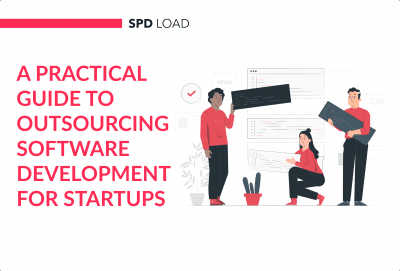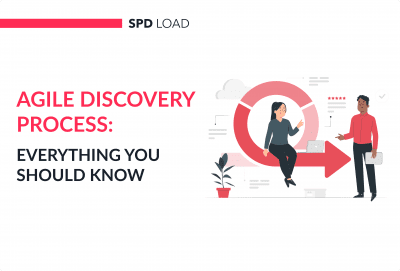Return Of Investment Calculator: What is It and How to Use One?
- Created: Apr 09, 2024
- 4 min
In the world of business and finance, Return on Investment (ROI) is a widely used metric to assess the potential profitability of various investments, like outsourcing app development, buying a house, or stocks, and everything in between.
While more complex formulas exist for accurate ROI calculation, ROI remains popular due to its simplicity and broad applicability. This method is often used as a quick way to evaluate investment opportunities.
If you’re planning on investing in a new venture, feel free to use our ROI calculator to evaluate potential profits.
How to Use the ROI Calculator?
Let’s dive into the world of Return on Investment (ROI) and explore how to use an ROI calculator effectively.
What Is ROI?
ROI is a fundamental metric investment metric.
Return on investment measures the profit or loss an investor generates relative to the initial investment cost.
ROI is typically expressed as a percentage.
Here is basic formula used to calculate ROI:
ROI=( Total Investment/Net Profit )×100%
Where:
Net Profit = Total Profits – Total Investment
Let’s unwrap what the formula means:
- Gain from investment is the net income or profit you get from the investment.
- The cost of investment is the initial amount you’ve invested.
Here’s a simple example of how to calculate ROI percentage.
Imagine you’ve invested $50,000 in dating app development.
This includes hiring dedicated mobile app developers, a design team, and a project manager who keeps track of the whole process.
Your total profits to date sum up to $70,000.
Using the formula: NetProfit=TotalProfits−TotalInvestment
Net Profit = $70,000 – $50,000 = $20,000
ROI=($50,000$20,000
ROI=(10.4
ROI=0.4×100%= 40%
So, the ROI for investing $50,000 in your dating app development and earning $70,000 in total profits is 40%.
ROI is versatile because it can be used to evaluate the profitability of any investment, regardless of its type or size.
Whether you’ think to invest in stocks, real estate, business ventures, or even personal projects, ROI helps you understand how much you’ll gain or lose relative to the amount you invest.
However, the challenge arises from different investments having unique characteristics and factors that can influence their ROI calculations.
For example, some investments may have varying time frames, different levels of risk, or additional costs to consider.
As a result, it can be tricky to apply ROI consistently across all investments without considering these factors.
Remember, a simple ROI calculator can be a great tool, but understanding its nuances and context is essential for making wise financial decisions.
Discover our IT services
When calculating Return on Investment (ROI), you need to understand other related financial metrics.
Here is a list of them:
Net Profit (Net Income)
This is the total profit you get after deducting all expenses, such as taxes and interest.
Initial Investment (Cost)
Total amount of money invested in a project or asset. This includes purchase price, setup costs and other associated expenses.
Investment Gain (Profit)
Difference between the final value of the investment (e.g. sale price) and the initial investment cost.
Payback Period
Investments have a payback period when they generate enough cash flow to cover their initial cost. Shorter is better.
IRR
This metric shows how good an investment is. Basically how much money you can make from your investment over time.
Profit Margin
Ratio of net profit to total revenue. How well a company is making profit from its sales.
Break-Even Point
Break-even point is the level of sales or production where total cost equals total revenue. After this point the investment starts to make a profit.
Additional Investments
This is the extra amount you will add to your investments regularly. If you select the option to adjust for inflation, your investment amount will increase each year by the inflation rate.
Inflation Rate
Expected long term average increase in prices. Often measured by the Consumer Price Index (CPI). You can adjust this rate as per your expectations.
Tax Rate
Percentage of your investment returns that you will pay in taxes annually at the end of the year.
Inflation Adjustment
Check this box to adjust future investment amounts for inflation.
Investment Final Total
Total value of your investment at the end of the period. If adjusted for inflation, this is the value of the investment in today’s money; otherwise this is the actual value.
What Else to Consider When Calculating ROI?
When calculating Return on Investment (ROI), there are several important factors to consider beyond the basic ROI nvestment calculator formula.
Let’s explore these considerations.
First, it’s a timeframe. ROI doesn’t specify a specific timeframe. Consider whether you want to calculate ROI for a specific period (e.g., monthly, annually) or the entire investment duration.
You can use an annualized ROI calculator for yearly calculations.
Remember that longer investment horizons may yield different results.
Then, you need to differentiate between Net vs. Gross ROI.
Net ROI accounts for all costs associated with the investment (including taxes, fees, and maintenance). Gross ROI considers only the direct gain or loss without factoring in additional costs.
You also might want to include Opportunity costs. This is a potential return you could have earned from an alternative investment. Consider what you could have done with the same resources elsewhere.
High-risk investments may yield higher returns but also come with greater volatility. Hence, you need to assess the risk level and adjust your expectations accordingly.
Inflation is another important factor to take into consideration as it erodes the purchasing power of money over time. Adjust your ROI for inflation to understand its real value.
Taxes also impact your net gain. Account for tax implications when calculating ROI.
ROI often focuses on financial gains but you can also consider non-monetary benefits (e.g., brand visibility, customer loyalty). These intangibles contribute to overall value.
Different industries have unique considerations (e.g., technology, real estate, stocks).
Understand industry-specific risks and rewards.
And last but not least is the exit strategy. Plan how and when you’ll exit the investment.
ROI may change based on the exit point.
Remember that ROI is a versatile metric, but its interpretation depends on context. When making investment decisions, keep these factors in mind.












